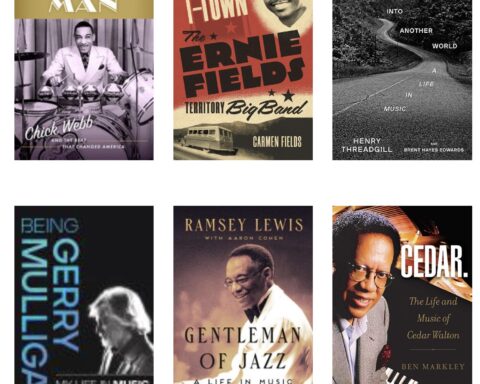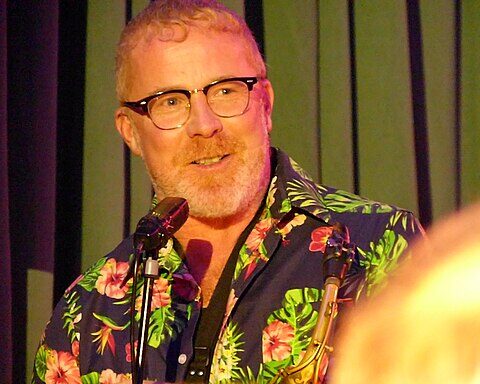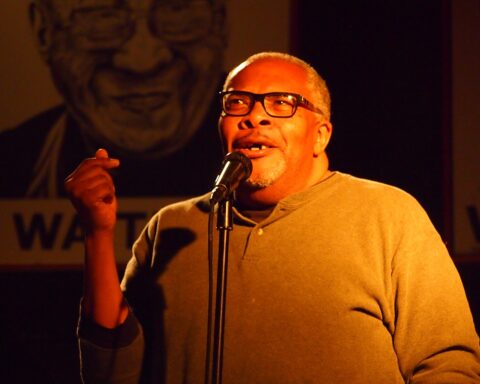Like many well-reputed jazz festivals, the one hosted by Romania’s emblematic Bran Castle is the
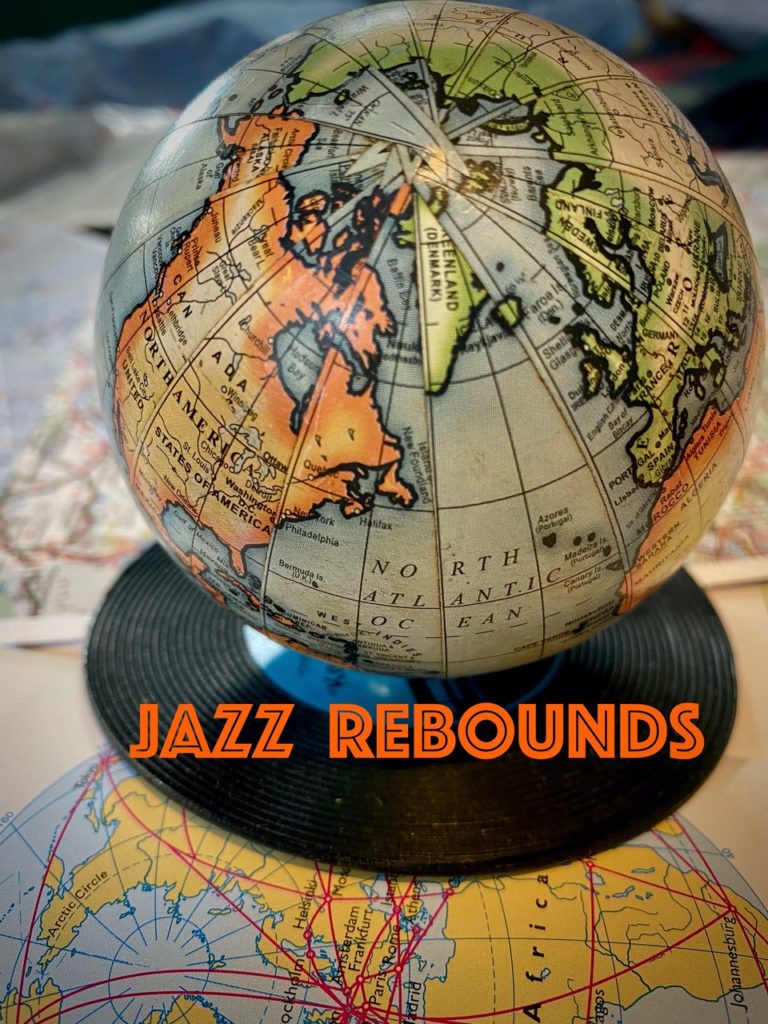
work of a music lover with a founding principle. Sergiu Doru is a sophisticated, intellectual producer based in Bucharest. Having suspended this annual event in 2020 due to the global health crisis, he was able as Jazz Festivals and Events in collaboration with Compania de Administrare a Domeniului Bran and local sponsors, to present the eighth iteration of his unique, by all appearances private Jazz at Bran Castle event. It is held by very deliberate design in the inner courtyard of the medieval edifice located in Transylvania’s Southern Carpathians in the very center of Romania, an atmospherically intimate open space, accommodating perhaps 100 spectators.
This spellbinding site — formerly a royal castle, since 1990 preserved as a history museum attracting many visitors — gives the program a chamber-like character, ever more evident in this iteration (August 27 to 29, 2021). As such, one may consider it a pendant of Romania’s grand-scale Gäräna Festival, about which I reported in JJA News a year ago. Indeed, that is how Doru himself views his endeavor, writing in the program book of Jazz at Bran Castle offering “a state of quietness . . ” in balanced counterpoint to the “frenetic sounds” of Gäräna.
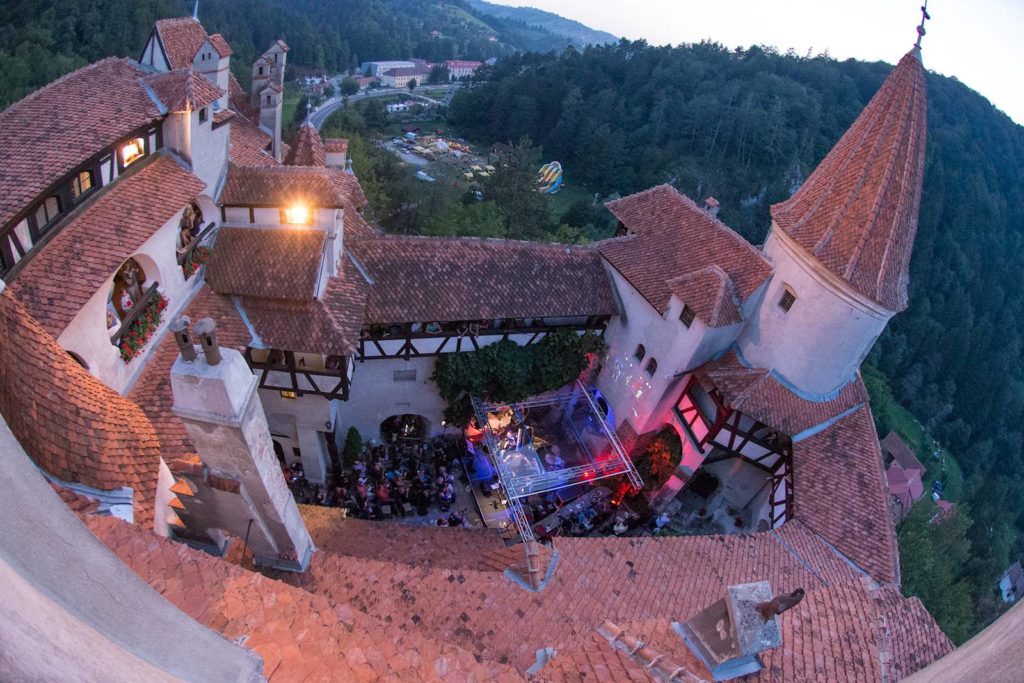
This year’s inaugural recital belonged almost entirely to the ethereal, intellectualized realm. Indonesian violinist Iskandar Widjaja and Israeli pianist Itamar Golan performed works by Bach, Paganini, Grieg, Saint-Saëns and Kreisler with aplomb and accuracy. The beauty of classical music was thus updated to the jazz-loving public. Besides – especially in the passages of virtuosity – moments of quasi-jazz interplay were often detectable. It was a happy idea to include in the recital a large suite consisting of arias from Gershwin’s Porgy and Bess opera. The melodic opulence amalgamated in the American composer’s crucible revealed his ability to anticipate today’s stylistic abundance of jazz art.
An alloy of rare timbres was displayed by Italian accordionist Luciano Biondini in the company of Austrian sitar-player Klaus Falschlunger. The former uses the accordion buttons as an effective substitute for the piano keyboard, while the latter has evolved in the direction of “jazzing” the multi-stringed Indian instrument.
They evince a conceptual openness to various horizons: jumping themes alternate with meditative ones, bluesy inflections give way to repetitive unisons, echoes of flamenco or konnakol vocal percussion evoking Carnatic music.
Finland’s new jazz generation was represented by three excellent musicians: pianist Alexi Tuomarila, drummer Olavi Louhivuori and trumpeter Kalevi Luohivuori.
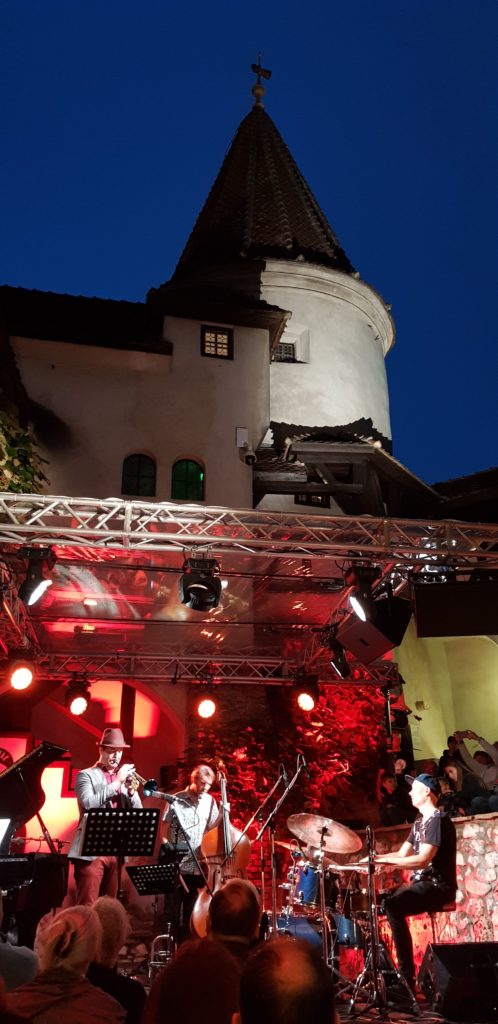
in the courtyard, photo © Bran Castle, by Felix Sebastian Nazarevscky
The three Finns were joined by the trustworthy Norwegian double bassist Mats Eilertsen, quite often a “commuter” on the route to Romania. From their performance’s very beginning, the audience was captivated by the clarity and balance of the melodic-harmonic-rhythmic components of the group’s compositions.
They turn into meticulously woven sound fabrics, favoring a pulsating groove similar to that of Keith Jarrett’s “Scandinavian Quartet” in its heyday. A certain ”coolness” of the livelier themes performed by Tuomarila’s quartet seems explicable by the affinities between West Coast’s laid-back style and the Nordic feeling.
The Norwegian Hakon Kornstad is a special phenomenon. After having established himself as a high-class saxophonist, he had the revelation of an irresistible attraction to opera music. Consequently, he enrolled at the Norwegian specialized Academy, graduating with a master’s degree in opera tenor. A few years ago, in Cluj, I was amazed by the way Kornstad happily combined the two musical genres. On the Bran stage, the fusion seemed even more solidly structured.
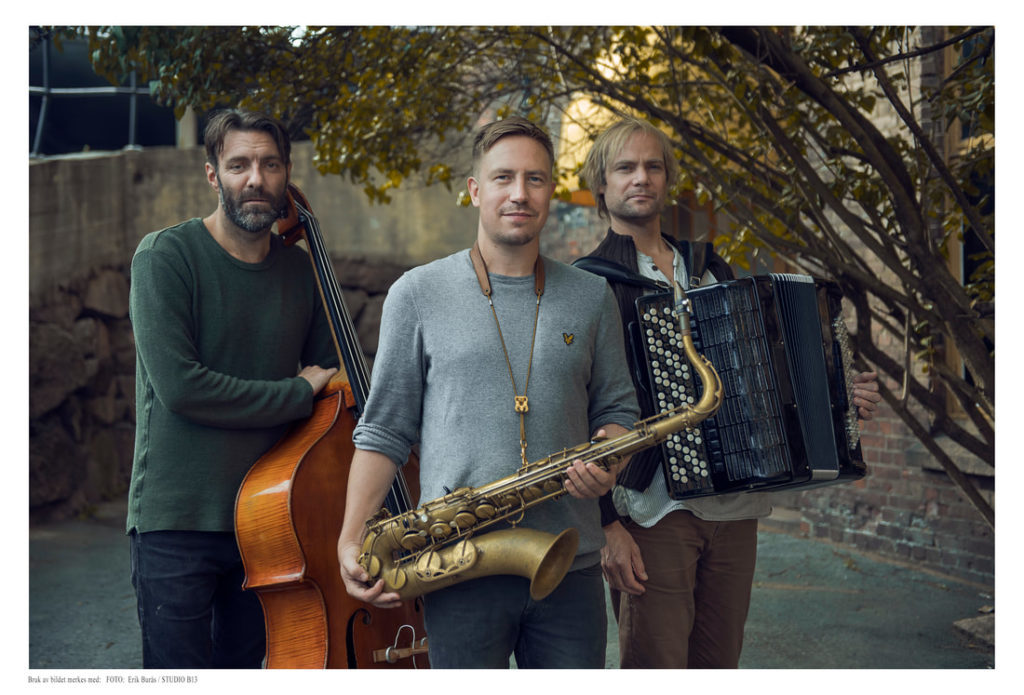
In general, his jazz passages are marked by innate lyricism, revealed by elaborate technical procedures but without resorting to electronic adjuvants. At one point the surprise comes: the saxophonist metamorphoses into a singer, delivering arias, lieder or songs, in the best bel canto tradition. Then there are vast parts where the tenor saxophone paraphrases, through elegant volutes, the melodic substance conspicuously expounded by the vocal tenor — one and the same Hakon Kornstad.
The minimalist formula used by the bold musician, born in Oslo in 1977, includes two other compatriots, fully empathetic: Frode Halti, accordion, and Mats Eilertsen, double bass. Pristine canzonette napoletane alternate with a lied by Schubert, or a theme by Wagner, as well as with a refined composition by Anton Webern. A sombre free episode, including the disassembly of the saxophone, dissolves into the alertness of another song. An emotional highlight is reached when, after samples of Italian and German tunes, Kornstad illustrates the universality of the musical art by singing a piece by Grieg in his mother tongue. The festival’s well-informed public enjoys such odd combinations.
Guitarist Kevin Seddiki (b. 1981) and accordionist Jean-Louis Matinier (b. 1963) presented an elegant recital entitled “Rivages,” marked by its French roots. The dialogues between the two instruments took place under the sign of spontaneity and, at the same time, of pharmaceutically dosed harmonies. A permanent exercise of mutual adjustment, of counterpoint finesse, of subtleties with an impressionistic substratum. Even when the performers resorted to percussive procedures, the predominant sonority remained airy, always muted, as if defying the shrillness of the age we are going through.
The festival’s culmination was the show of a supergroup comprising
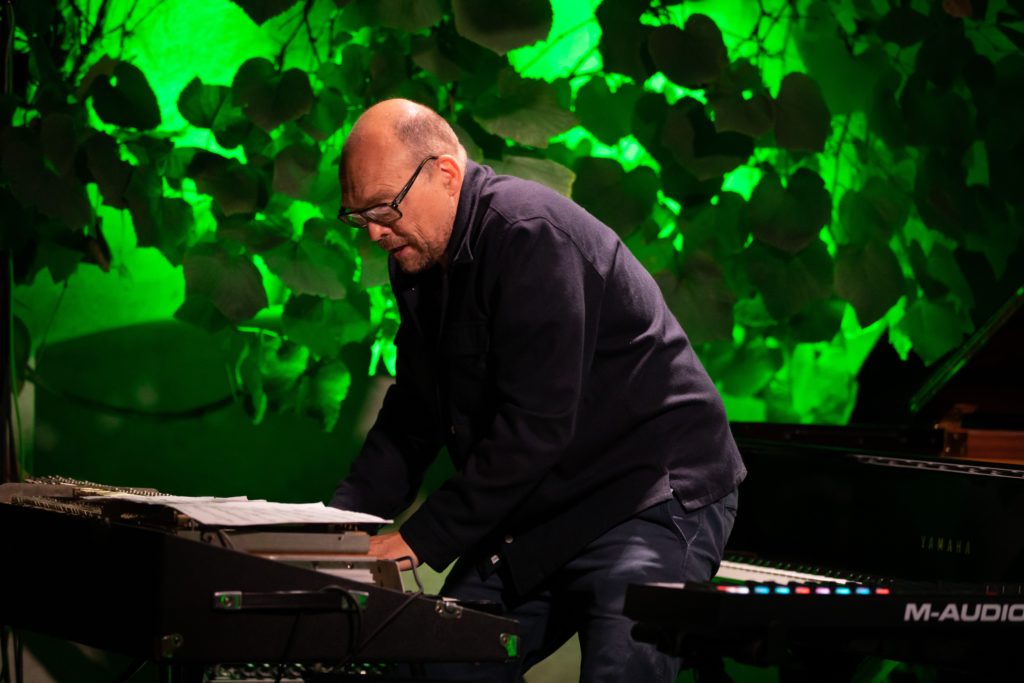
Norwegian jazz star Bugge Wesseltoft, acoustic and electronic keyboards, and his Swedish colleagues Dan Berglund, double bass and Magnus Öström, drums. The latter two had been part of the E.S.T. trio, led by pianist Esbjörn Svensson, a most influential European group at the turn of the millennium. After Svensson’s tragic disappearance, his comrades retreated into their own projects.
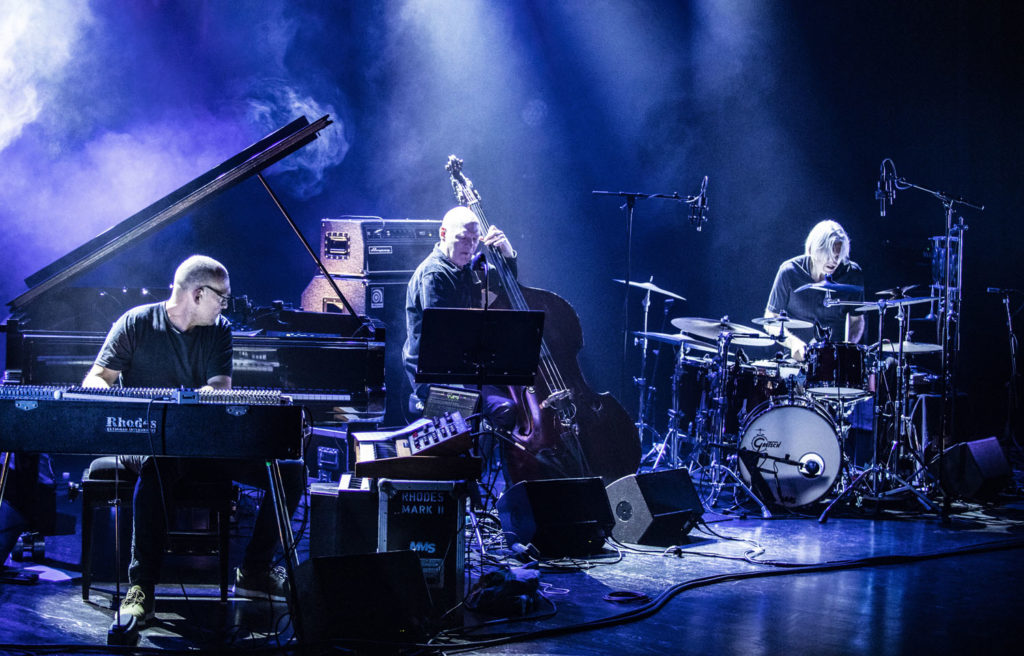
In 2017, these current Scandinavian luminaries of contemporary jazz joined forces under the name Rymden (translatable as “cosmic space”). Their creations have a visionary character, and the art of the trio reaches new heights through them, after those marked in Sweden by Jan Johansson, Per Henrik Wallin Trio or E.S.T.
The title of their recent album, Space Sailors, is not haphazard. The songs invite listeners to epic electroacoustic journeys with plenty of surprises. Wesseltoft’s appetite for multifarious joyfulness, exercised (often simultaneously) on synthesizers and the concert piano, is now crowned with a surplus of sensitivity, which also moves his “space exploration” partners. I daresay that the specific contribution of the keyboardist consists in his unexpected openness to areas of grace and even tenderness. These are highlighted through the interaction of the three musicians, previously recognized instead for their quasi-expressionist strength.
Small but intense, Jazz at Bran Castle is an oasis of beauty and hope in an age of aggressive alienation.


